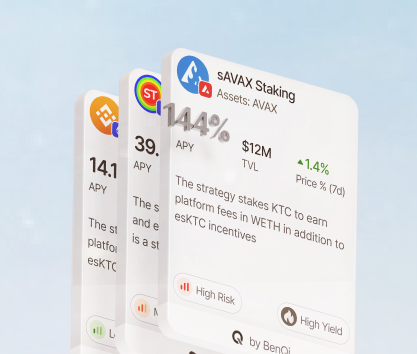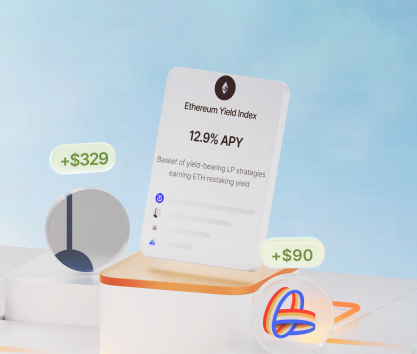Crypto enthusiasts are very familiar with the word arbitrage as many use this particular approach heavily in their day-to-day financial activities. The DeFi sector in particular has several solutions that can elevate returns from several types of arbitrage strategies. While some of them are barely usable and others may still be in active development, it is still important to be informed about the most effective tools available to investors.
The general term DeFi AI arbitrage may refer to different methods of using artificial intelligence and machine learning to enhance various trading and portfolio management systems. Before discussing the implementation of AI into them, we need to talk about types of arbitrage commonly used by crypto traders.
Automated crypto arbitrage in 2025
The overwhelming majority of contemporary strategies that involve different ways to arbitrage cryptocurrencies are heavily automated as it is necessary to improve analytics, reaction time, and precision of operations to receive consistent returns.
Here are some of the most popular arbitrage approaches that are widely used in the crypto market and decentralized finance:
- Triangular arbitrage is a popular target for algorithmic crypto arbitrage systems as it allows investors to make safe trades using sets of pairs that feature three digital assets. For instance, you can track BTC/USDT, ETH/USDT, and BTC/ETH and make instant trades when differences in prices occur.
- Futures arbitrage can be a solid approach to trading assets in the crypto market as it has a variety of derivatives that work similarly to traditional futures contracts. An investor buys assets on the spot market and sells them on the futures market as prices tend to differ.
- Statistical arbitrage relies heavily on intelligent financial modeling involving statistics, technical analysis, and predictive analytics. Investors track different digital assets that may have direct and indirect correlations to form a balanced portfolio that performs well under all circumstances.
While other arbitrage methods, such as spatial or cross-border, exist, the vast majority of strategies in the DeFi ecosystem are the three systems mentioned above. Since all of them are reliant on using measurable factors like price action dynamics, you can use neural networks and expert AI systems to create effective AI trading strategies and exploit inadequacies in pricing across the whole crypto ecosystem.
In the last quarter of 2024, the number of unique monthly wallet addresses that interacted with decentralized protocols was over 57 million according to Statista. Some surveys suggest that over 65% of all retail traders use automation to at least some degree. It means that thousands of retail traders engage in blockchain arbitrage mechanisms.
The use of neural networks in arbitrage
In 2024, Tanlamai et al. conducted a field experiment using their in-house trained AI system that relies, in part, on user-generated content.
The robot powered by the model managed to identify 293 arbitrage opportunities throughout the year generating $7 on average per trade.
Note that the field experiment was quite limited but demonstrates the capabilities of modern AI-powered automated investment tools.
Here are some other examples of studies that implemented neural networks into arbitrage strategies:
- Hung et al. conducted an experiment by combining arbitrage pricing theory with various types of neural networks to find whether it is possible to use the combination in portfolio management. ARIMA model was used as the benchmark. Machine learning arbitrage consistently outperformed ARIMA models in this experiment.
- Salvatore Carta et al. reviewed available scientific literature in 2022 to find various applications for neural networks in statistical arbitrage. The researchers inspected AI models that used the StatArb method and compared returns against traditional strategies like buy-and-hold. Daily mean returns for StatArb systems ranged from —0.28% to 0.23%. While the outcomes were either close or worse compared to buy-and-hold, the methods explored in the study are quite promising.
- Krzysztof Gogol and Johnathan Messias et al. conducted an experiment to quantify arbitrage opportunities in the AMM sector by reviewing protocols based on Ethereum ZK rollups paired with CEXes. The group derived the Maximal Arbitrage Value (MAV) formula that achieved $104K in MAV during the three months period from July to September 2023. This finding is of particular interest to many AI researchers looking for new data sets to incorporate into their models.
Some experts say that the variety of digital assets inherently correlated due to being deployed on specific blockchain networks provides the necessary asset diversity to create excellently performing statistical arbitrage systems. AI-driven financial optimization in portfolio management is the dream of many development teams. However, the research in this particular field is quite limited and does not provide conclusive evidence that neural networks work in StatArb-like systems.
Reviewing scientific papers in this domain rarely yields good results as many efforts are private. For instance, multiple automation providers including the likes of CryptoHopper and WunderTrading are implementing AI systems into their product lineups and, specifically, into statistical and triangular arbitrage systems.
Intelligent profit maximization
The use of artificial intelligence and machine learning in the DeFi sector is growing at a rapid pace. However, many examples of AI implementation are related to general portfolio management and not asset trading. Here are some examples:
- Rivo’s Maneki AI is an interesting product that focuses on providing crypto trading insights, educational materials, and assistance in portfolio management. It is a great tool that does not make any investment decisions on your behalf.
- ChainGPT looks like an interesting instrument to build crypto trading algorithms as it has a tool for smart contract auditing and development. However, it is just a new form of generative AI wrapped in crypto-friendly packaging.
- Virtuals, ElizaOS, and Fetch are mostly focused on AI agents that operate in the social media ecosystem. While also quite useful to analyze the investment sentiment and influencing users, it is not a path toward an autonomous investment system based on neural network trading.
On the other hand, you can automate many on-chain operations by integrating various specialized tools into your portfolio. These instruments are not enhanced by AI but can be very effective in the right hands. For instance, the MEV bot can be used for smart contract arbitrage on Ethereum mainnet to produce consistent profits for users who are willing to spend time learning how to operate such applications.
The future of AI-driven arbitrage
The DeFi ecosystem offers a wide range of trading opportunities. The recent advancements in interoperability allow various protocols to bridge the gaps between different platforms and even chains allowing for incredibly efficient cryptocurrency price optimization across the sector. However, the growing interconnectedness also leads to faster price convergence, one of the biggest risks of any arbitrage strategy that relies on directly trading digital assets.
It is questionable whether advanced expert AI systems can address these issues. For instance, some scientific studies show that statistical arbitrage systems are less efficient compared to traditional approaches like buy-and-hold. On the other hand, models that include feature selection methods to enhance predictive market analytics often outperform what experts deem the best.
This particular sector is an emerging one with a wide range of up-and-coming products and platforms promising outstanding returns to users who are interested in crypto arbitrage. However, the quality of existing tools is still lacking in many aspects. If improvements like better risk assessment in AI trading come through in the near future, we may see exciting new developments in the DeFi ecosystem.









